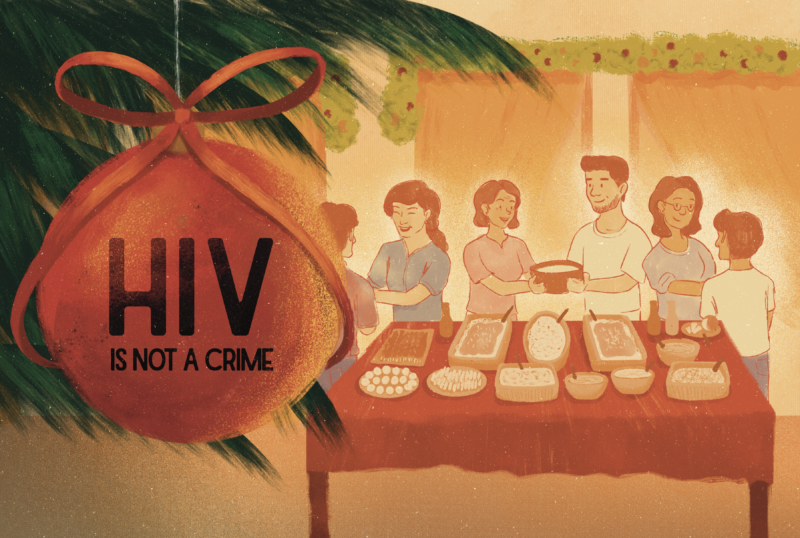YOLANDA CAME to the Philippines like a thief in the night.
It was 4:40 in the morning when it first made its presence felt. It made landfall over Guiuan, Eastern Samar on November 8, 2013, and the weight of its feet falling on the floors of people’s homes was felt all around the world. It was unlike anything the world has ever seen.
Super Typhoon Yolanda, also known as Haiyan, had powerful winds of 300 kilometers per hour and was described as one of strongest tropical cyclones ever recorded in history.
The thief did not even bother to be subtle. Rather than tiptoeing around the corridors, it swept through homes in Eastern Samar, Leyte, Cebu, Iloilo, and Palawan, taking almost everything with it and leaving everything damaged in its wake. According to a report by the Department of Health (DOH), Yolanda came with monstrous winds that uprooted trees and tore roofs off of buildings, while storm surges as high as 10 to 20 feet smashed into communities.
Edgardo Almazan, Jr., a Yolanda survivor, told Rappler that the walls of their house broke, water surged from everywhere, waves punched through their roofs, and water thick with debris rose higher than the tops of the coconut trees lining their barrio. The water kept rolling for half an hour.
Screams of neighbors became the alarm that rang through the islands that fateful morning. By 7:00 AM that day, the thief had turned off the lights.
Leyte and Samar seemed to have disappeared from the face of the Earth as even satellites could no longer locate them on the map. There were no means to contact the people anymore. Power and communication lines were all down, and the whole world lost contact with the affected areas. It was hours of darkness as the thief purged through the area.
For hours on end, Yolanda had ravaged the islands. As images of the disaster slowly trickled in, the world began to witness what the thief had stolen: It took away 6,300 souls, injured 28,688 people, affected 16,078,181 lives, and left Php 95.48 billion’s worth of damages as reported by the National Disaster Risk Reduction and Management Council. Until now, 1,062 people still remain missing.
Four years later, families of the missing still cry for justice as they continue to experience the persisting darkness that the thief had left behind, hoping to find a trace of their lost loved ones.
Absence of closure
Almazan recounted that when the water finally subsided, dead bodies of children, as well men and women alike were scattered all over the streets. Liezl, another Yolanda survivor, told Rappler that after five hours of feeling like being stuck in a massive washing machine, she saw people walking like zombies on the streets looking for their families.
A thousand people went missing that day, and despite having four years pass by, families are still unable to move on and get the closure they have so longed for.
According to Aileen Almora, a lawyer from Initiatives for Dialogue and Empowerment through Alternative Legal Services, Inc. (IDEALS), no one from Tacloban City, the city hardest hit by Yolanda, has filed for the presumptive death of a loved one.
Under Article 391 of the New Civil Code of the Philippines, family members can file for the declaration of presumption of death if the person has been in danger of death under circumstances such as natural calamities and failure to be identified by authorities.
After this declaration, the person will be presumed dead for all purposes and compensation benefits will be given to the families left behind. Employee compensation, insurance, and inheritance are just among the other benefits to this declaration, which may give families hope to start anew and move forward.
IDEALS, a non-government organization that provides legal assistance to marginalized sectors, turned over a petition to the Public Attorney’s Office regional office in Tacloban City that seeks a court declaration on the presumption of death of all the missing to help the left-behind families move on.
However, not all affected families are involved in this petition. Some are not aware of the existence of such law, while some view the process as rather long and expensive. No proper system is also in place to process these petitions.
Almora also says that the petition “targeted 200 beneficiaries at first,” but some have been disqualified because they have already secured false death certificates.
The forging of death certificates can become problematic especially when the presumed dead reappears and the cancellation of a death certificate entails and requires court intervention. However, for other families, it is not to gain compensation benefits, but rather, peace of mind.
She adds that some could not undergo the right process at all because the deceased did not have a birth certificate in the first place.
According to Almora, going through the judicial process becomes therapeutic for the other families.
“They just really wanted closure. It’s still at the back of their heads, eh. They still follow leads. They just want a paper,” Almora says.
She recounts a story where a couple who lost their six-year-old child to Yolanda would go all over the archipelago just to look for any leads of their child. They would fly from one corner of the country to another at just the mention of any possible lead they could hear. With the declaration of the presumption of death, their uneasiness can finally be put to rest.
“It’s still an internal struggle. With that piece of paper it can help them and remind them, ‘Oo, wala na,’” she says.
Moving forward
President Rodrigo Duterte is currently looking to divert Php 5 B worth of unused funds originally intended for the victims of Yolanda to the rehabilitation of Marawi City. In response to this, research group IBON Foundation released a statement reminding the government to remember Yolanda instead of abandoning its victims.
“It gives the impression that the job has been done while in fact thousands of survivors are still without livelihoods and languish in substandard shelters and living conditions,” IBON Executive Director Rosario Guzman says.
Today, some of Yolanda’s victims still reside in resettlement homes with subpar living conditions. According to data acquired from the National Economic and Development Authority, only 16,846 housing units have been completed by the National Housing Authority (NHA) in areas struck by the Typhoon Yolanda in Eastern Visayas, or just 30% of the NHA’s target of 56,140 permanent housing units. This is attributed to land acquisition problems. Meanwhile, 11,957 units are still undergoing construction.
It has been more than 1,500 days since the thief’s visit, but few have changed in the lives of those hardest hit. The thief managed to carve its name in Eastern Visayas before escaping as quickly as it dealt its blows, and yet most of the damage it left behind remains unresolved to this day. As Yolanda victims remain hopeful, there is still much work left to be done.




